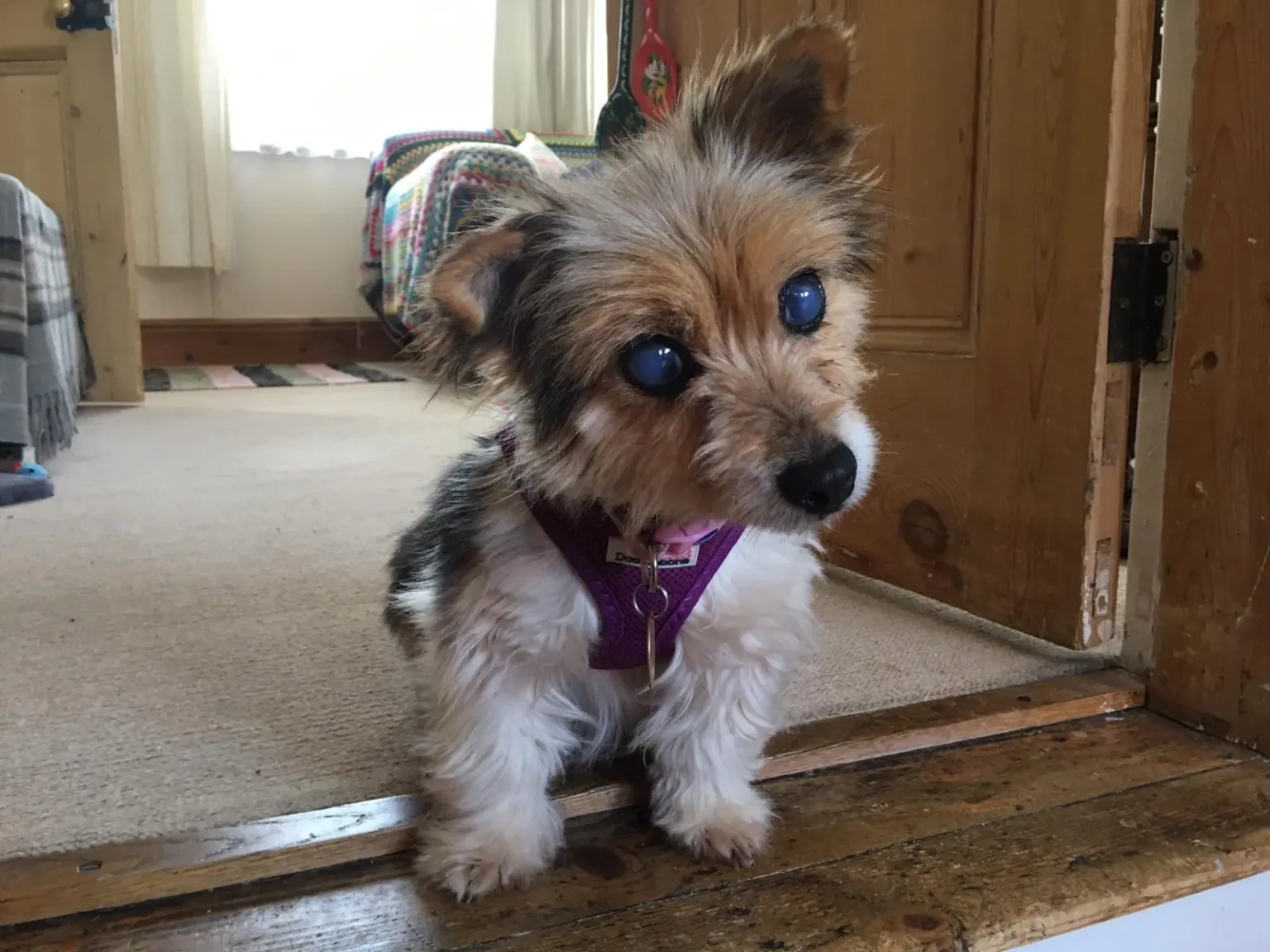Ever feel like your dog is trying to tell you something?
Consider us your pet-to-human dictionary. Ask us anything!

Blind dogs and those with vision loss can live a fulfilling and enriched life with the right understanding and support from their owners. Here, we tackle some common questions and offer advice on care.
You should schedule a vet visit immediately if you think your dog might be going blind. Signs could include:
There are many reasons dogs lose their sight. Your vet can run tests to work out what the issue is and advise on how to manage their health going forward.
Ensure that your dog is on a good-quality diet and has regular health check-ups. Your vet might advise you to give them appropriate supplements that support eye function, such as antioxidants or Omega-3 for dogs. Always check with your vet before making changes to your dog’s diet or giving them supplements.
Depending on the cause, vision loss can be gradual or sudden, and may be linked to old age or disease. Some dogs are more likely to develop certain eye problems due to their breed. Common conditions and diseases which cause blindness in dogs include cataracts, glaucoma, retinal atrophy, and tumours. Your vet will be able to explain the condition and any treatments that are needed.
The loss of a dog’s sight can be unsettling for both them and their owner, so it’s important to prepare for the special set of challenges it brings.
Dog-proofing your house for safety should be a priority. Here are some ways you can help your blind dog stay safe at home:
Keep the layout of the house the same to help your four-legged friend navigate! Here are a few tips to help:
You can help your dog create a “mental map” of the house by using recognisable items in certain areas. For example, putting rugs in front of furniture, wood chips near fencing, or always having the radio on in the same area will help them to recognise where they are.
If your dog is bumping into things regularly, think about buying special equipment to keep them safe. For example, a blind dog halo is a flexible tube, usually attached to a harness or vest, that forms a circle around the dog’s head, touching obstacles in front of their face and helping them avoid injury. Speak to your vet for advice about this.
As with any dog, predictability and consistency are important for well-being. A few extra considerations and a steady routine can help provide this predictability for your blind dog.
Use your voice when interacting with your dog, especially before touching them or when someone is approaching them, as this will help them feel less startled. Over time, and through repetition of naming and explaining things in their daily life, your dog will be able to predict what’s going to happen. For example, saying the word “ear” before you touch your dog’s ear will eventually help them expect the action. Or “say hi to Lucy” could let them know their canine friend, Lucy, is close by.
You could also have a bell around you to help your dog know where you are and make them feel safer.
You’ll need to adapt the way you train your blind dog, too, teaching them through vocal cues and touch.
Although your dog may still be able to hear your voice, they’ll rely heavily on their sense of touch. Teaching them cues through touch as well as with your voice will help them learn and make it easier to understand you in loud environments. For example, a double tap on the shoulder might be asking for a “sit”.
When out and about, you’ll come across many different hazards for your blind dog, so make sure they’re always safe. Keep them on the lead in public and always assess the environment. If you’re in a safe and securely fenced area, you could consider letting your dog off the lead. Again, check for holes in the ground or objects sticking out.
It’ll be useful to teach them cues such as “wait”, “walk on”, “left”, and “right”. Announcing curbs or steps is important, too, for example by using the word “hop”. For the first couple of months outside, take things really slowly and encourage them down curbs gently with treats.
Play is such a crucial activity for any well-rounded dog! There are lots of ways to give your blind dog opportunities to problem-solve and play. Here are a few ideas to get you started:
In some cases, a blind dog, who likes being around other dogs, may benefit from having a canine companion.
You’ll need to make sure the other dog is the right match. Just because they’re dog-friendly, it doesn’t necessarily mean they’ll be suitable to live with a blind dog.
Bringing a new dog into your blind dog’s life needs careful consideration. This step might best be supported by a professional to make sure you’re doing what’s right for the dogs and anyone else in your home.
Remember, if you think your dog may be losing their sight or you have another medical concern, contact your vet as soon as possible.
If you need support with behaviour and training, you can get in touch to book an appointment with one of our team. For more advice around dog behaviour and healthcare, visit Ask Woodgreen.